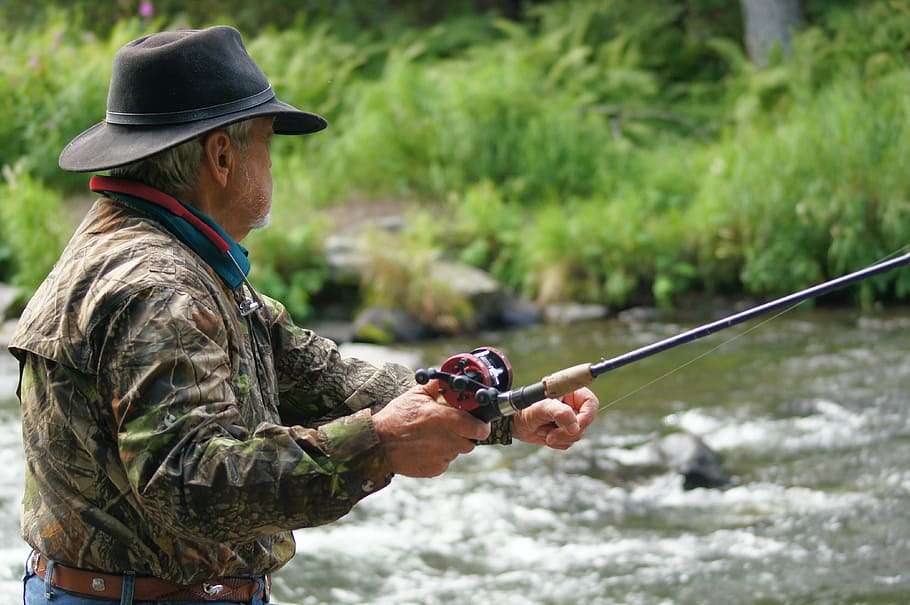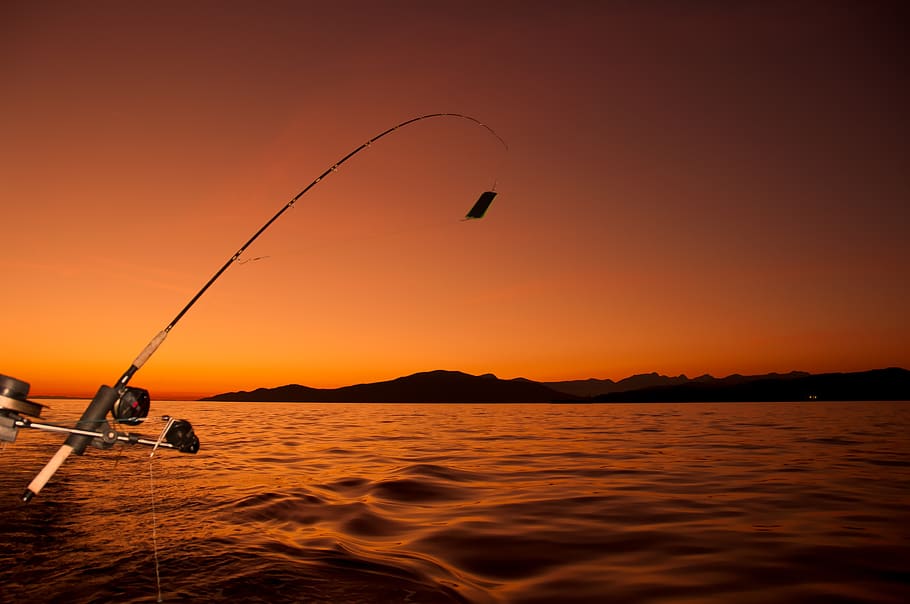Ever wondered where to put the weights, lures, overhand knots, and way swivel on a fishing line for that perfect catch? We’ve all been there, trying to figure out the ideal placement for those weights in the slot. In this post, we’ll dive into this age-old question and provide you with practical insights and tips to try.
From understanding the role of weights, lures, and swivel in fishing to mastering their positioning, we’ve got you covered. So, if you’re ready to elevate your fishing game and reel in those big catches with a lure, join us as we unravel the mystery of where to put the weights on a fishing line.
Table of Contents
ToggleEssentials of Fishing Weights
Types of Sinkers
There are various types, each serving a specific purpose. For instance, we have split shot sinkers, rubber core sinkers, heavy-duty sinkers, swivel, ring, and lure. These lures come in different shapes and sizes, catering to diverse fishing conditions.
The right type of sinker, lure, swivel, and line can significantly impact our fishing success by ensuring proper bait presentation.
Choosing the appropriate sinker type, lure, and line is crucial as it directly affects how effectively we can fish in different environments. For example, using heavy-duty sinkers and lure in strong currents helps keep our bait steady at the desired depth without being carried away by the water flow.
Importance of Weight Placement
Where to put the weights and lure on a fishing line is essential for achieving the desired depth and natural bait movement.
Placing the weight too close to our bait lure can hinder its natural motion and reduce potential bites from fish. By experimenting with weight placement along our line and lure, we can determine the optimal position that attracts more fish.
Properly positioning our weights, lure, and line ensures that our bait appears as natural as possible underwater while also reaching the depths where fish are likely to be found.
Line Rigging
Line rigging, which refers to how we set up our fishing line with weights, hooks, and lures, plays a vital role in securing these components correctly. Different line rigging techniques, including lure, allow us to adapt effectively when faced with varying fishing scenarios.
This knowledge empowers us to make quick adjustments based on changing conditions such as water depth, current strength, lure, and line.
Attaching Weights to Fishing Line

Knot Tying Basics
Knowing essential knots like the clinch knot or Palomar knot for tying line is crucial. These knots provide strength and prevent sinkers from slipping during casting line. Properly tied knots on the line make our fishing experience efficient and enjoyable.
For example, mastering the clinch knot allows us to quickly attach various types of weights without hassle to the line.
Learning a few basic knots will help us become more versatile anglers with line. It’s important to understand that different fishing situations call for different types of knots, so having a repertoire of reliable options gives us an edge in various fishing scenarios.
Securing Split Shot Weights
Using split shot weights involves pinching them onto the line using pliers or fingers. Positioning these weights at regular intervals along the fishing line ensures even weight distribution, preventing imbalance during casting and retrieval. This technique helps maintain stability when presenting bait, lures, or line to fish.
Ensuring that split shot weights and line are tightly secured prevents them from sliding or shifting during fishing activities such as reeling in a catch or navigating through underwater obstacles.
Using Rubber Core Sinkers
Rubber core sinkers feature a hollow center that allows easy attachment without causing damage to the fishing line. The flexibility provided by the rubber core and line enables quick adjustments in weight placement based on our fishing needs, making it easier for us to adapt our approach as conditions change.
These sinkers are ideal for delicate presentations where minimal disturbance is required, allowing us to finesse our bait presentation while maintaining stealth in challenging fishing environments.
Proper Placement of Weights
Where we place the weights on our line is crucial for determining the depth at which we can catch fish. By moving the weights closer to the hook and using line, we can present our bait shallower in the water.
Conversely, placing them farther away on the line allows us to reach greater depths. For example, when targeting trout near the surface, positioning weights closer to the hook and using the right line helps keep our bait within their feeding zone.
Experimenting with different weight positions and line is essential for finding the optimal depth based on specific fish species and their behavior. This trial and error process enables us to understand how varying weight placement affects our fishing success line.
Using Split Shot Weights
Placing the split shot weights above or below a swivel on the line is crucial. This prevents them from interfering with hooks or lures. By positioning weights and line closer to the hook, we can keep our bait near the bottom where many fish species feed.
Experimenting with different weight positions along the line helps us find what works best for our fishing style. We might discover that placing the weights a few inches above the hook on the line increases our chances of catching certain types of fish.
Adjusting weight placement according to current speed and direction maximizes our chances of attracting fish. Placing heavier weights in fast-moving currents helps maintain control and stability during retrieval.
Applying Rubber Core Sinkers
Easy Attachment
We love how easy they are to attach. These sinkers don’t require any additional tools or knots, making them a convenient choice for us. The quick-release feature allows us to adjust the weight effortlessly during our fishing sessions. By choosing sinkers with such convenient attachment methods, we save time and make our fishing experience more enjoyable.
For example, when we’re out on the water and need to quickly adjust the weight on our line due to changing conditions, these rubber core sinkers come in handy. We can easily add or remove them without any hassle, allowing us to focus more on enjoying our time fishing.
When to Use
Understanding when and where to place weights on a fishing line is crucial for success. Different fishing techniques call for specific weight placements based on the target species and environmental conditions. For instance, when bottom fishing or targeting fish near the surface, placing weights closer to the hook is essential.
We’ve found that adjusting weight placement based on various factors such as water depth, current strength, and wind conditions increases our chances of success while out on the water. It’s all about adapting and fine-tuning our approach based on what’s happening around us.
Attaching Bomb Weight Sinkers

Heavy-Duty Rigging
We need to use larger sinkers and stronger lines, especially when targeting bigger fish or fishing in challenging environments. Properly securing these heavy sinkers is crucial as they need to withstand the pressure exerted by powerful fish during fights.
By understanding heavy-duty rigging techniques, we can tackle more demanding fishing situations effectively. For instance, using 2-ounce pyramid sinkers with a 50-pound test line for deep-sea fishing.
Experimenting with different weight positions allows us to find the sweet spot for enticing bottom-dwelling fish. When engaging in bottom fishing tactics, placing weights closer to the hook is effective because it keeps the bait near the seabed where bottom-dwelling species are often found.
Adjusting weight placement based on water depth and current speed helps maintain contact with the bottom effectively.
Fine-Tuning Your Fishing Rig
Finding the perfect balance between weight and bait is crucial. We need to ensure that our sinkers are properly balanced with the size and type of bait we’re using. Overloading the line with excessive weight can restrict the natural movement of the bait, reducing our chances of attracting fish effectively.
By experimenting with different weight placements through trial and error, we can understand what works best in various fishing scenarios. This approach allows us to adapt and refine our techniques over time. Keeping a record of successful weight positions serves as a valuable reference for future fishing trips, helping us fine-tune our gear setup for optimal performance.
For instance, when targeting bottom-feeding fish like catfish or carp, we may find that placing heavier weights closer to the hook improves our chances of enticing these species. On the other hand, when angling for bass or trout in shallower waters, lighter weights positioned further up the line might yield better results.
Embracing this trial-and-error method not only enhances our understanding but also empowers us to make informed decisions based on real-life experiences rather than relying solely on theoretical knowledge.
Advanced Tips and Techniques

Seasonal Adjustments
We need to consider seasonal adjustments. In colder months, placing weights closer to the hook can entice sluggish fish near the bottom. This is because fish tend to move slower in cold water.
During warmer seasons, adjusting weight position higher up on the line can target fish feeding closer to the surface. By adapting our weight placement based on seasonal changes, we increase our chances of catching different types of fish throughout the year.
Another factor that influences where to put the weights on a fishing line is environmental factors such as water clarity, temperature, and structure. These elements play a crucial role in determining where exactly we should place our weights for optimal success. For example, if we are fishing in clear water with high visibility, placing weights further up from the bait can make it look more natural and enticing for fish.
Understanding these environmental conditions allows us to adapt weight placement accordingly and improve our overall fishing success by targeting specific areas where fish are most likely to be found.
Conclusion
We’ve covered the essentials of fishing weights, from attaching them to your line to fine-tuning your rig for optimal performance. Proper placement of weights is crucial for achieving the desired depth and presentation, and we’ve delved into various techniques such as using split shot weights, rubber core sinkers, and bomb weight sinkers.
As you head out on your next fishing excursion, remember that the placement of weights can make all the difference in enticing those elusive catches.
So, grab your gear, head to your favorite fishing spot, and put these tips into action. Experiment with different weight placements and types to see what works best in different conditions. And most importantly, enjoy the process – because sometimes it’s not just about the catch, but the thrill of the pursuit. Tight lines, and happy fishing!
